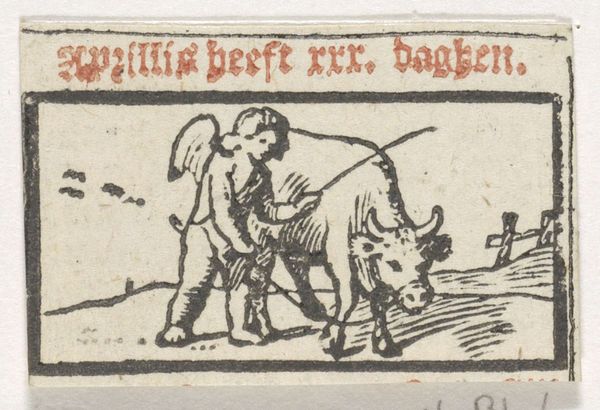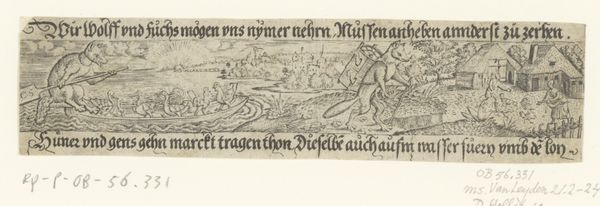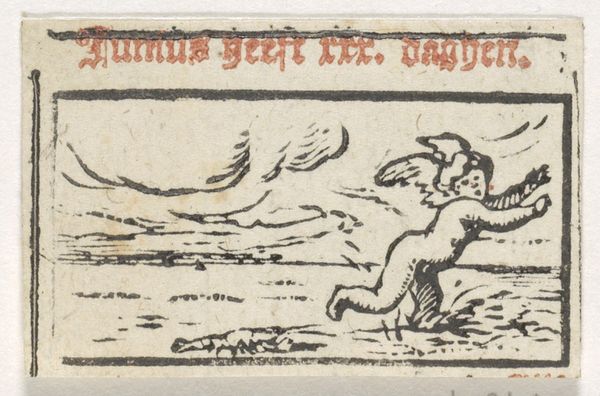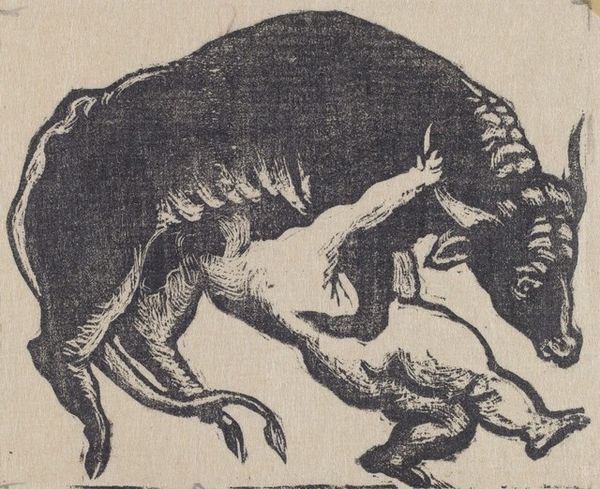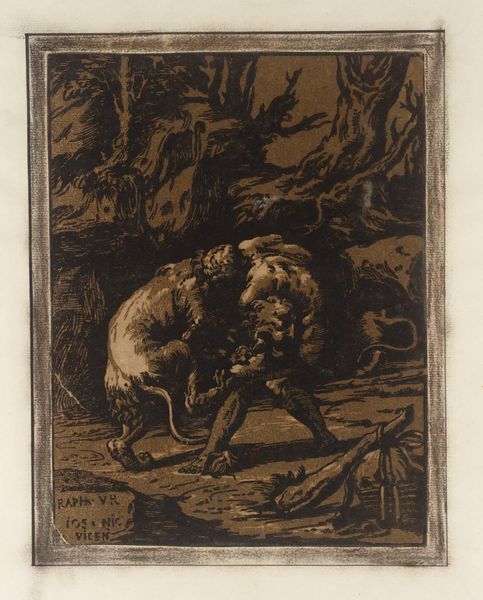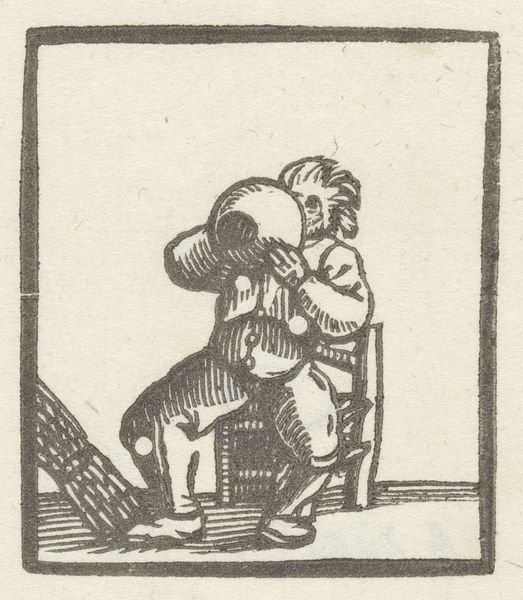
print, woodcut, engraving
#
narrative-art
# print
#
landscape
#
figuration
#
woodcut
#
genre-painting
#
northern-renaissance
#
engraving
Dimensions: height 22 mm, width 38 mm
Copyright: Rijks Museum: Open Domain
Curator: Here we have a print entitled "November" dating back to the period between 1635 and 1694 and created by Dirck de Bray. What are your initial thoughts? Editor: The starkness is immediately striking. The woodcut or engraving gives such strong contrast— the heavy, dark lines forming these simplified shapes...a wild boar confronting a tiny, rather sad looking angel! It has such a medieval feel. Curator: It certainly does possess a distinct aesthetic from that time! Considering Dirck de Bray, we have to acknowledge the importance of family dynamics. His father, Salomon de Bray, a renowned architect and painter in the Dutch Golden Age. How might such influence frame his work and perspective? Editor: Definitely. It is tempting to consider Salomon's architecture and monumental works when viewing this delicate print. The difference in scale hints at available resources, while the similarities speak to education in production techniques within artistic families like this. Look at the density of lines and their texture that define both ground and hog. The materials required for woodcut print-making are deceptively simple, but require skill. Curator: Yes, it speaks to skill, access to both literal materials but also inherited forms of knowledge. Considering "November" within the cycle of the seasons, the themes surrounding the image, especially considering it comes from the Northern Renaissance era. What connections can you draw with its position within both temporal and spiritual planes? Editor: Well, traditionally, November is linked to darkness, death, and preparing for winter's scarcity. Seeing the labor involved – preparing materials, executing the engraving - the resulting image resonates because that production required its own form of slow, steady work against diminishing daylight. And I can't help but look again to this juxtaposition - the wild beast meets this oddly vulnerable angel. What power structures are hinted? Curator: A really excellent reading, particularly situating labour into it. It underscores the realities of both temporal and cultural contexts; that the very *act* of art creation does reflect and speak of its origins, it makes me think how De Bray used this symbolism for exploring concepts around mortality. The figures, each possessing cultural connotations from different historical trajectories within November’s bleak reality, reflect and clash within the same thematic plane. Editor: Definitely, understanding the means allows a reading into this type of clash. Thanks for teasing that tension out for me, too. It provides more complexity.
Comments
No comments
Be the first to comment and join the conversation on the ultimate creative platform.


